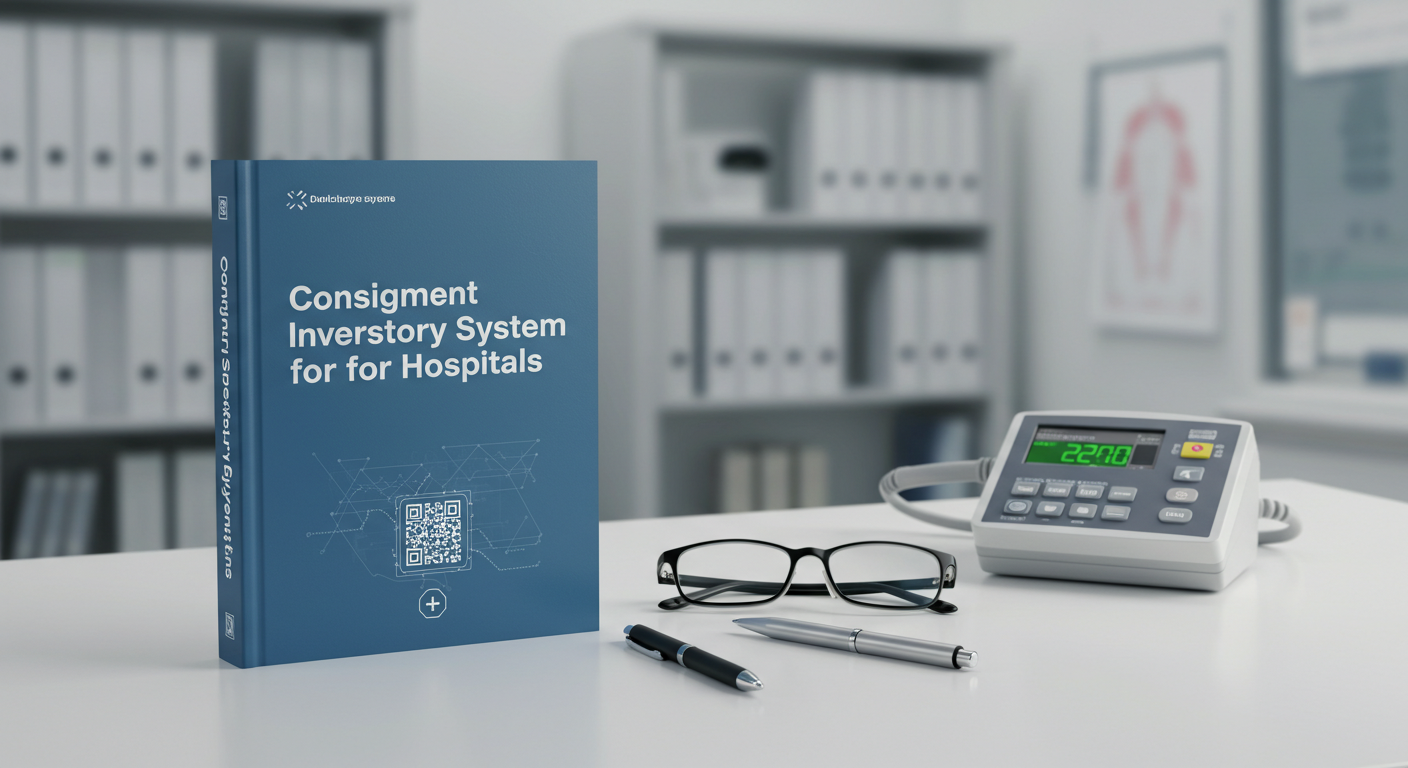
Managing hospital inventory is no small task. From surgical supplies to essential medications, hospitals rely on a seamless flow of inventory to maintain patient care standards while minimizing wastage and costs. Enter the consignment inventory system, a game-changing approach that has been gaining traction in the healthcare industry for its ability to address perennial supply chain challenges.
This in-depth guide will explain what a hospital consignment inventory system entails, outline its benefits, and provide actionable insights into implementing one effectively. If you’re involved in hospital procurement or logistics and looking to optimize inventory management, this guide is for you.
What is a Consignment Inventory System?
A consignment inventory system is a supply chain model in which a supplier maintains ownership of the products stored at a hospital’s facility until they are used or sold. Unlike traditional purchasing methods, the consignment approach allows healthcare organizations to defer payment until items are actually consumed.
Key Features of a Consignment Inventory System:
- Supplier Ownership: Suppliers retain ownership of the inventory until it’s used.
- On-Site Storage: Products are stored at the hospital, ensuring immediate availability when needed.
- Delayed Billing: Hospitals are billed only for items that are consumed, improving cash flow.
- Regular Replenishment: Suppliers monitor inventory levels and replenish stock as needed.
Example Scenario:
A surgical tool distributor places a set of high-value surgical kits in a hospital’s inventory under a consignment agreement. The hospital only pays for the kits used in surgeries that month, while unused kits remain in stock for future use.
This system minimizes the hospital’s financial burden while ensuring critical supplies are always on hand—a win-win for both parties.
Why Hospitals Should Consider a Consignment Inventory System
The healthcare sector’s margin pressures are intensifying, making cost optimization and operational efficiency more critical than ever. A consignment inventory system directly addresses these challenges. Here’s how:
1. Cost Reduction Without Compromising Supply Availability
Hospitals no longer need to tie up significant capital purchasing bulk inventory. Instead, they pay only for what they use, reducing waste caused by expired or obsolete products.
2. Enhanced Cash Flow
Traditional inventory models require upfront purchases, straining financial resources. A consignment approach delays payment until consumption, freeing up capital for other operational needs.
3. Reduced Risk of Stockouts
Suppliers actively monitor stock levels, stepping in to replenish inventory when quantities run low. This minimizes the risk of supply shortages—a critical advantage in patient care environments where time is of the essence.
4. Improved Inventory Management
Tracking which items are consumed and when provides hospitals with detailed usage data. This data can help forecast future needs, further refining inventory control processes.
5. Stronger Supplier Relationships
By collaborating closely with suppliers, hospitals can forge stronger partnerships. Suppliers benefit from predictable sales, while hospitals enjoy reliable inventory support.
Real-World Example:
A report by Healthcare Financial Management Association revealed that healthcare providers implementing consignment systems experienced up to 25% inventory cost savings and a significant reduction in waste from unused supplies.
How to Implement a Consignment Inventory System in Your Hospital
Implementing a consignment inventory system requires a strategic approach that accounts for the unique needs of hospitals and suppliers. Here are six steps to get started:
Step 1: Define Agreement Terms
Begin by establishing clear terms with suppliers. This should outline:
- Ownership details
- Billing processes
- Frameworks for replenishment
- Responsibility for expired or defective items
Step 2: Identify Suitable Products
Not all products are suitable for consignment. Focus on high-value items with predictable usage patterns, such as:
- Surgical instruments
- Implantable devices (e.g., pacemakers, stents)
- High-cost medications
Step 3: Implement an Inventory Tracking System
Digitize your inventory tracking with a robust system that offers:
- Real-time stock updates
- Automated notifications for low stock levels
- Usage reports for data-driven decision-making
Platforms like SAP for Healthcare or Oracle Netsuite offer advanced tools tailored for hospitals.
Step 4: Train Your Staff
Educate procurement and inventory teams on the nuances of a consignment system. This includes:
- Understanding supplier agreements
- Updating inventory logs in real-time
- Managing replenishment timelines
Step 5: Monitor and Optimize
Regularly review system performance, including:
- Stock usage rates
- Billing discrepancies
- Frequency of overstocking or stockouts
Collaborate with suppliers to address inefficiencies and adapt to changing demands.
Step 6: Build a Partnership with Suppliers
Hospitals and suppliers must work as partners rather than transactional entities. Open communication and shared goals will ensure the system benefits both. This might include:
- Quarterly performance reviews
- Co-developing forecasts for high-demand periods
- Aligning data-sharing practices for seamless replenishment
Challenges to Watch Out For (and How to Overcome Them)
While advantageous, consignment inventory systems come with their own set of challenges. Understanding these can help you anticipate and mitigate issues:
1. Discrepancies in Inventory Counts
Tracking errors can occur when multiple parties manage the same inventory. Solution? Implement advanced tracking systems and establish clear roles for inventory oversight.
2. Expired Stock Responsibility
Who covers the cost of expired stock—the hospital or the supplier? Address this upfront in the agreement to minimize disputes.
3. Supplier Capacity
Suppliers may struggle to meet demand during high-stress periods (e.g., pandemics). Diversifying suppliers can act as a contingency plan.
By staying proactive, hospitals can ensure a more seamless implementation process while reaping the benefits of this innovative approach.
Why Consignment Inventory is the Future of Hospital Supply Chains
As healthcare organizations grapple with rising costs and increasing patient demands, adopting efficient supply chain practices is no longer optional—it’s essential. A consignment inventory system eliminates waste, optimizes cash flow, and ensures critical supplies are readily available at all times.
Hospitals that implement this system can pivot resources to focus on what truly matters—improving patient care and outcomes.
Want to learn more about tailoring a consignment inventory system for your hospital’s unique needs? Contact our team of specialists today for a consultation.
[Contact Us]
Final Thoughts
Consignment inventory is redefining the way hospitals manage their supply chains, offering a strategic solution to reduce costs while enhancing operational efficiency. By shifting to this model, healthcare facilities can address today’s challenges and prepare for tomorrow’s demands without compromising the quality of care. Whether you’re looking to minimize waste, improve cash flow, or ensure uninterrupted access to essential supplies, consignment inventory provides a proven framework for success. Take the first step toward transforming your hospital’s supply chain—embrace innovation today.
Conclusions
Adopting a consignment inventory approach is more than a logistical adjustment; it is a step toward building a resilient and cost-effective healthcare system. By implementing this model, hospitals can achieve greater financial stability, streamline their procurement processes, and enhance patient care outcomes. This strategic solution directly addresses the inefficiencies in traditional inventory methods, paving the way for sustainable growth and adaptability in an evolving healthcare landscape. Now is the time to evaluate your current practices and take decisive action to meet the demands of modern medicine.
FAQs
What is consignment inventory in healthcare?
Consignment inventory is a supply chain model where the supplier retains ownership of medical products until they are used or sold by the hospital. This approach reduces upfront costs, minimizes storage requirements, and ensures that essential items are readily available when needed.
How does adopting consignment inventory benefit hospitals?
By implementing consignment inventory, hospitals can reduce their financial burden, lower the risk of overstocking or stockouts, and improve the efficiency of their supply chain. This model allows healthcare providers to allocate resources more effectively while maintaining high standards of patient care.
Is it difficult to implement a consignment inventory system?
While transitioning to consignment inventory may require an initial investment in planning and collaboration with suppliers, the long-term benefits far outweigh the challenges. With proper coordination and technology, hospitals can seamlessly integrate this model into their operations.
Can consignment inventory adapt to changes in demand?
Yes, consignment inventory is highly adaptable. Suppliers work closely with healthcare providers to monitor usage patterns and adjust stock levels accordingly, ensuring that hospitals are equipped to handle fluctuating demand without unnecessary waste.
Are there risks associated with consignment inventory?
Like any system, consignment inventory has potential risks, such as mismanagement or lack of communication between hospitals and suppliers. However, these risks can be mitigated through strong partnerships, clear agreements, and the use of advanced inventory management tools.




